








By Shayna Klein (’25)
othing magical actually happens when you turn eighteen. Surprise! Speaking from recent experience, my reflection in the mirror looked exactly the same as it did the day before I turned eighteen and no balloons fell from my ceiling at midnight. But in the United States, eighteen means legal adulthood, which means one main thing, voting. Luckily, this year is an election year, so immediately following my eighteenth birthday, I was able to quickly fulfill this important task. As the only eligible voter of the GMSG student population, I felt even more responsible to vote and share my experience doing so.
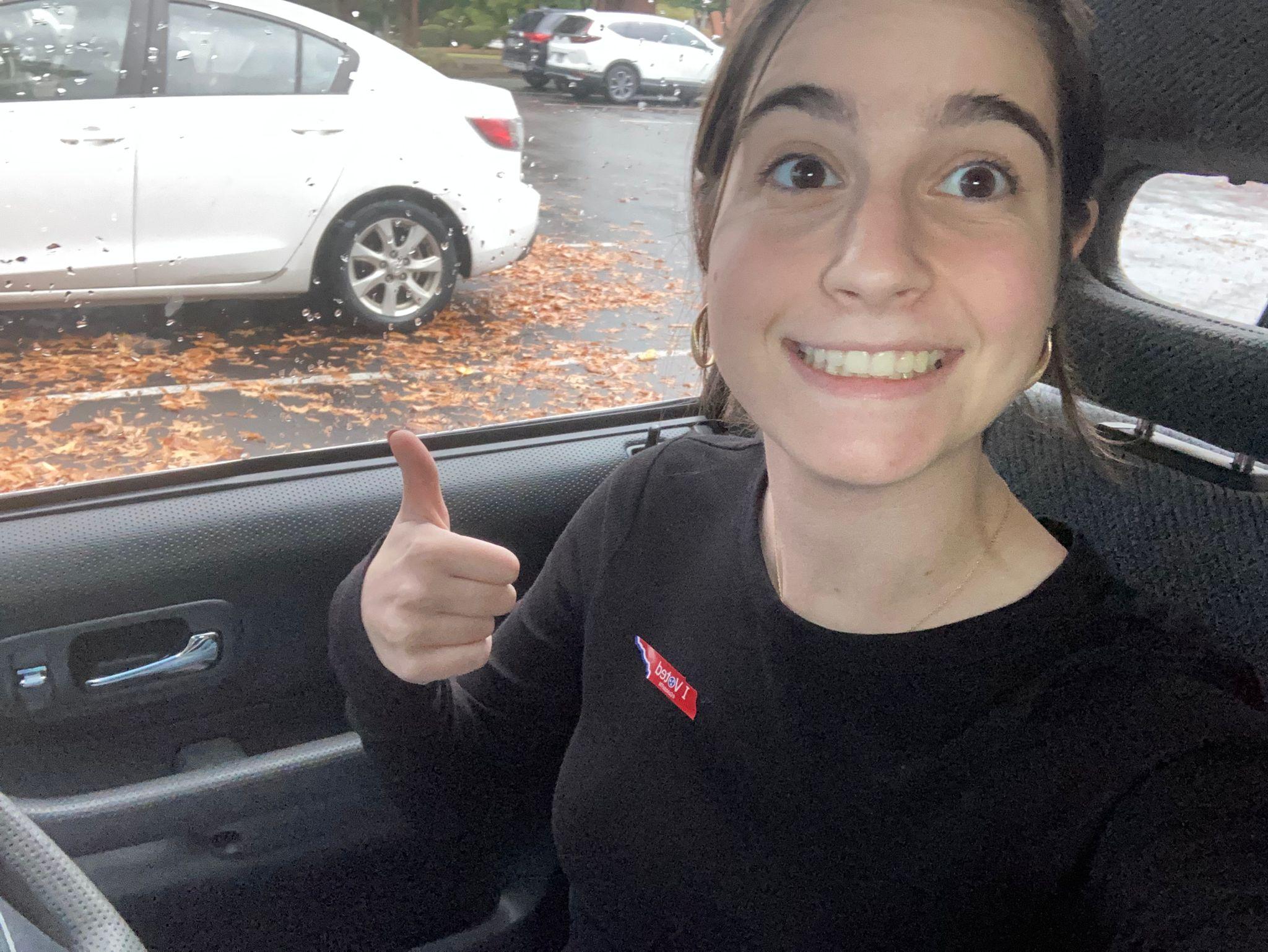
in all the necessary information, finding my driver’s license number for the first time since it was issued almost two years ago, and submitted it. Then came the waiting, and more importantly, the research. The reaction I received from nearly everyone who knew my birthday was, “Wow, you can vote! Young voters are so important.”
But I wanted to know why. While the idea and concept of voting is exciting, especially to those of us between the ages of eighteen and twentytwo who have never had the opportunity yet, I wanted to know why it was so important and what our vote really does.








As a first time voter, the first and most important step was to register. On September twenty-first, I became aware that registration must be done at least thirty days before election day. So I quickly went online, researched how to register, and promptly did so. I filled
According to a study by John Carroll University, young adults between the ages of eighteen and twenty-nine make up about 21% of the United States voting eligible population. That is approximately forty-nine million people, in contrast to


By Neima Rovner (’26)

fter a month packed full of holidays, hopping from Rosh Hashanah to Yom Kippur to Sukkot with hardly any breaks, we enter Cheshvan, also known as MarCheshvan due to the lack of Chagim. “Mar” means bitter, referring to the bitterness of a lack of holidays in this month. However, Cheshvan still has its share of special days. When Noach’s flood began and, a year later, he finally left the Ark, when Shlomo HaMelech finished the building of the Beit Hamikdash, and Rochel Imeinu’s yahrzeit are a few days we commemorate in Cheshvan
Next week, on the 11th of Cheshvan, we will be commemorating the life and death of Rochel Imeinu, wife of Yaakov Avinu and mother of Yosef and Binyamin. Rochel Imeinu was the second, yet most beloved, wife of Yaakov, who worked seven initial years for her only to have her switched with her sister. He served Lavan another seven years so he could finally marry Rochel. In Parshat Vayishlach, after giving birth to Binyamin, whom she named “Ben-Oni” (son of my suffering), Rochel Imeinu passed away on the way to Beit Lechem. Yaakov renamed his new son “Binyamin,” and Rashi explains that it was either because he was born in the South (which is one translation of ןימי), or because he was born in Yaakov’s old age (םימי). Yaakov then buried his wife on the side of the road, leaving Leah to be buried alongside Yaakov in Maarat Hamachpela.
Bereishit Rabbah explains that Yaakov made this decision deliberately. He saw that, in the future, Bnei Yisrael would be led in chains from the desecrated site of the Beit Hamikdash on the way to Galut, exile. They would pass by
Article continued from previous page
the thirty-nine million seniors who are voting eligible. This means that at least eighty electoral college votes depend on American young voters, making them responsible for about 15% of the total electoral votes. In the last election, the youth vote was the deciding factor in Ohio, swaying the state red. The League of Women Voters claim that young voters are the most diverse group of voters in the electorate, leading to varied interests and opinions on a wide variety of issues. Gen Z is also known to be incredibly passionate about issues important to them, more so than previous generations, making them key players in the political scene. They are also considered a more educated generation, having access to political information at all times through means of modern technologies of cell phones and social media. While social media is often not the most trustworthy news source, it definitely does its part in encouraging young audiences to care about politics and get involved and educated, which was my next step.
Rochel Imeinu’s tomb and daven there for the eventual Geula, redemption.
In Eicha Rabbah, the midrash relates a story that occurred in Heaven during this procession. First, Avraham came to Hashem and begged him, on the merit of his willingness to sacrifice his son at Akeidat Yitzchak, to bring the Jews back. Hashem refused, so the other Avot tried to come to their children’s aid. Yitzchak came and asked for the same on the merit of his willingness to be sacrificed at Akeidat Yitzchak. Next came Yaakov, who invoked his merit of staying in Lavan’s house for twenty years and then putting himself in harm’s way to save his children from Eisav. Then was Moshe, who implored Hashem to return the nation on his merit of leading Am Yisrael forty years in the desert, only to pass away before he could enter Eretz Yisrael. However, Hashem still remained adamant on His decree.
Finally, Rochel Imeinu came before Hashem. She told Hashem of her love for Yaakov and his love for her, and how she discovered her father’s plot to switch the sisters. She made signs with Yaakov so he would know it truly was her under the Chuppah when the time came. However, realizing the embarrassment that this would cause her sister, Rochel dismissed any inklings of jealousy and shared the signs with Leah, sitting back and watching as Leah married the love of her life. How, Rochel asked, could she, a mere being of flesh and blood, not have been jealous of her rival while Hakadosh Baruch Hu was jealous of worthless idols? Hashem was immediately filled with mercy on behalf of Continued on page 3
After understanding why I should vote, I needed to know all the options and find the one for me. I knew the big words, Trump for Republican and Harris for Democrat, but I set out to find what exactly this meant. I also found those running independent or third parties and learned about Jill Stein and the Green party and how they are rapidly gaining popularity and votes. I looked into issues that trouble me, such as America’s involvement in the war in Israel, and even took Buzzfeed-style “who should I vote for” quizzes. After much research and discussion, I finally felt educated enough to cast my vote. After finally receiving my voter card in the mail, on November fifth I drove to the nearest voting location and made my choice. I gave them all my identification information and did my civic duty. Now, I can proudly and confidently say that I made an educated decision and was one of the important young voices of the 2024 presidential election.
Rochel and relented that, in her merit, Bnei Yisrael will eventually return to Yerushalayim HaBnuyah.
It’s only fitting that Rochel’s selfless display of Ahavat Chinam, baseless love between Am Yisrael, is what will bring the final Beit Hamikdash. Ahavat Chinam and, on the flip side, Sinat Chinam, baseless hatred, played a huge role in the Beit Hamikdash, as illustrated by the following two stories. It’s well known that the reason for the Churban Beit Hamikdash was Sinat Chinam, but less known is a story of Ahavat Chinam that had to do with Binyan Beit Hamikdash, the building of the Beit Hamikdash.
In the times of Dovid Hamelech, he was searching for the future site of the Beit Hamikdash. On two sides of a mountain lived two brothers. One of these brothers was wealthy but childless while the other was poor but with many children. Some people would look to the other side of the mountain and see what the other has and they don’t. The poor man would look and covet his brother’s wealth, the wealthy man would covet his brother’s children. But instead, these two brothers did the opposite. The wealthy man saw his brother’s financial burden and, in an attempt to help him out, would take some of his crop at night and plant it in his brother’s field on the other side of the mountain. Meanwhile, the poor man saw that his brother had no children and, in an attempt to lessen the sadness of that, he would take some of his crop and plant it in his brother’s field. Every morning, the brothers would wake up and count their crops only to find nothing missing. They were unable to explain the phenomena until, one night, they met the other on the mountain on his way to plant the crops. Dovid Hamelech’s men witnessed this heartwarming
sight and immediately dedicated the mountain as the future site of the Beit Hamikdash.
The gemara tells a different story of a rich man who was throwing a party, towards the end of the Second Temple era. He told his servants to invite his friend Kamtza but they instead invited his enemy Bar Kamtza. When the man discovered the blunder at the party, he became furious and demanded that Bar Kamtza leave. Bar Kamtza, humiliated, offered to pay for his meal, for half of the party, for the whole party, if the man let him stay. The man refused, his hatred for Bar Kamtza so consuming, and kicked him out of the party. At the head of the table was a group of rabbis who simply sat there, silent, and watched the humiliation of their fellow. The ordeal led Bar Kamtza to complain to the authorities about the Jews, leading to the destruction of the Beit Hamikdash.
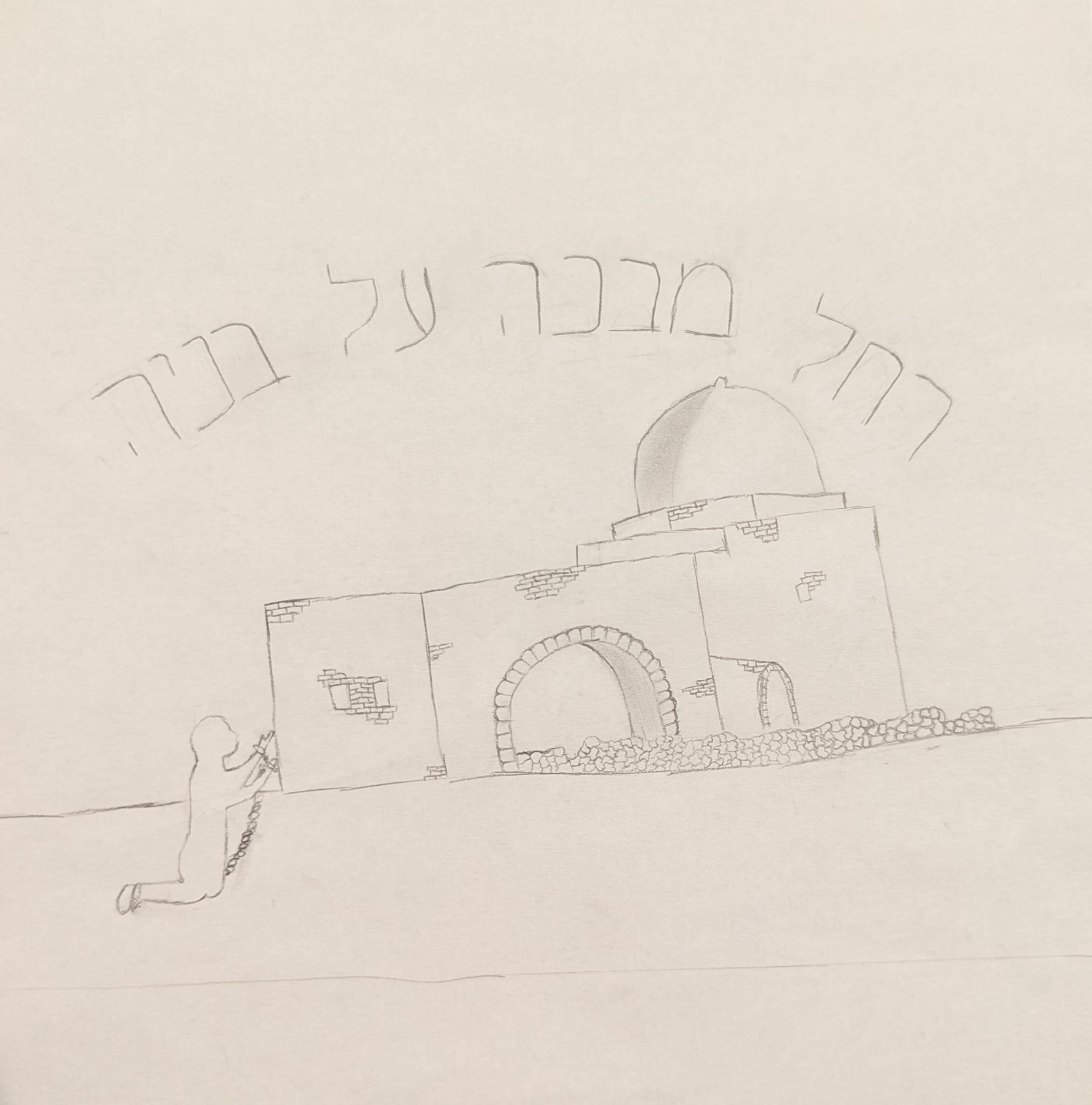
The Maharal explains that the purpose of the Beit Hamikdash is unity. Instead of everyone serving Hashem in their own backyards, they travel all together to the Beit Hamikdash, sacrifice on the same Mizbeach, listen to the same Kohen Gadol. Therefore, only unity in Klal Yisrael can bring about Beit Hamikdash Hashlishi.
While Rochel Imeinu’s story is unlikely to happen in our times, the other two stories are very practical. How often do you look at another person and see something to be jealous of and not see a way to help? How often do you put your own pride over the honor of a fellow Jew? Every day, we are faced with decisions that affect those around us. Rochel Imeinu was able to put her sister’s honor above her own happiness, an incredible act that will eventually bring about the Geula. May we merit to see the fruits of her sacrifice and be part of bringing about the ultimate Geula speedily in our days.
By Sarah Kahane (’25)
he story of Hagar and Sarai, found in this week’s Parsha, Parshas Lech Lecha, appears at first glance to be one of jealousy and rivalry. Sarai, unable to bear children, offers her maidservant Hagar to Avram as a second wife to ensure that Avram will have an heir. When Hagar becomes pregnant, tensions rise between her and Sarai, who appears resentful of Hagar’s newfound status. However, when looking deeper at this story, particularly in the context of Avram and Sarai’s larger mission, a question too large to be ignored appears. How could Avram and Sarai, the role models for every generation before us and every generation to follow, act on such jealousy and rivalry?
Avram and Sarai were not just ordinary people; they were pioneers of monotheism, pillars of the Jewish nation, seeking to spread knowledge of Hashem in a world dominated by idolatry and selfishness. Their home was a place of Chesed and openness, welcoming travelers and teaching them about the one G-d. Everything they did was motivated by their commitment to Hashem. When Sarai realized she might not be able to have children, her proposal that Avram marry Hagar was not born out of insecurity or rivalry but from selflessness. She was willing to sacrifice her own position as Avram’s only wife to ensure that his legacy would continue through a child.
his partner in their divine mission, understands what is necessary for their household’s integrity. By allowing Sarai to address Hagar’s attitude, Avram shows his confidence in Sarai’s ability to guide the household in alignment with their shared values.
When Hagar flees from Sarai, feeling mistreated, an angel appears to her in the wilderness and instructs her to return and serve Sarai. This directive is significant. It emphasizes that Hagar’s role in Avram’s household requires her humility and alignment with Sarai’s guidance. The angel’s message underscores that Hagar’s spiritual growth and her future son’s role in Avram’s legacy depend on her willingness to respect Sarai’s authority and wisdom.
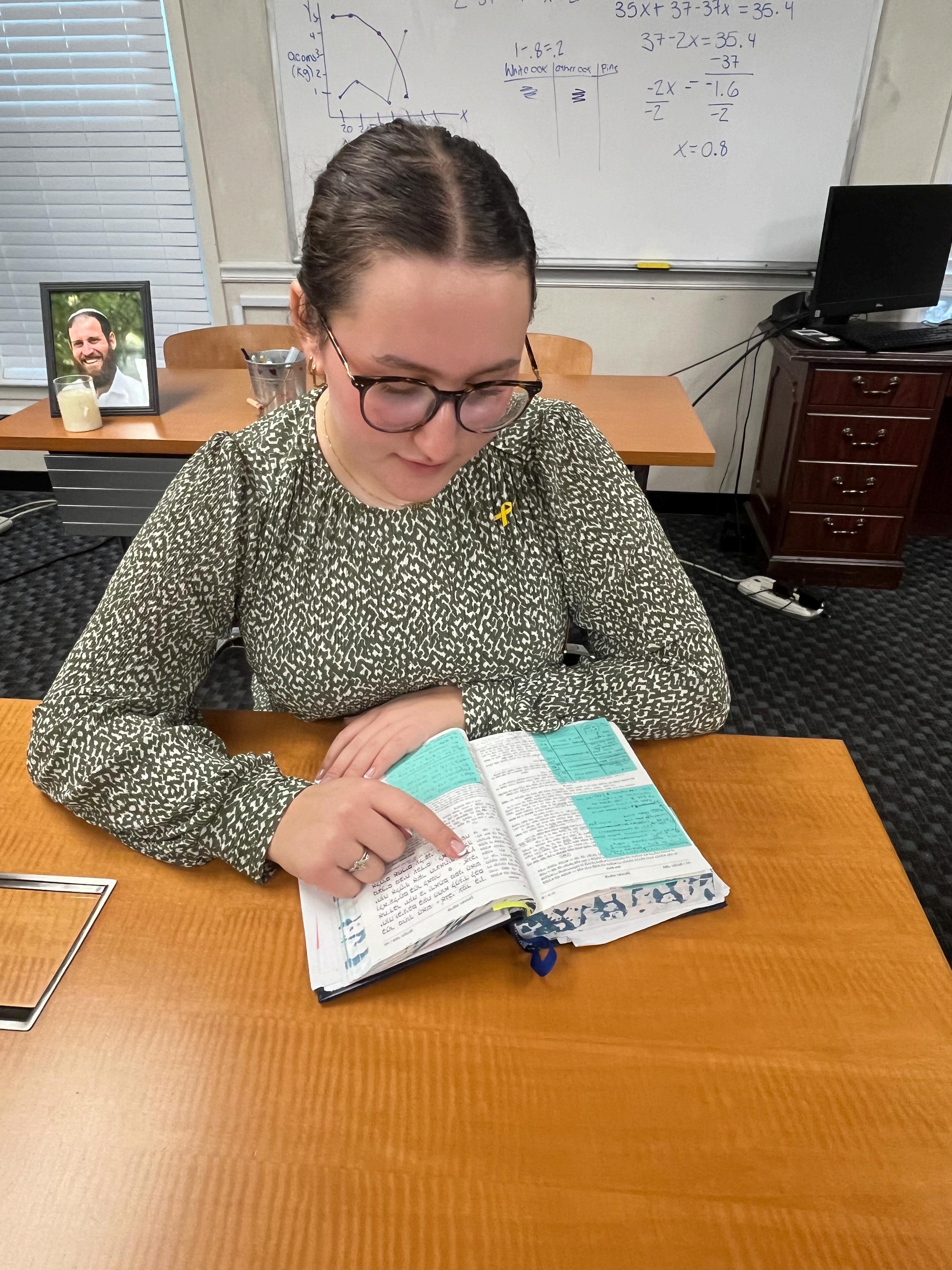
When Hagar becomes pregnant, her attitude toward Sarai changes. According to Rashi, Hagar begins to look down on Sarai, viewing her inability to conceive as a sign of disfavor from Hashem. This shift creates tension because it disrupts the values of humility and respect that Sarai and Avram worked to create. Hagar’s pride threatened to undermine the mission of their household, which required humility and respect for Hashem above all else. Sarai, seeing this, takes action to restore harmony and discipline. Her response is not one of petty jealousy; rather, it reflects her role as the spiritual leader of the household, responsible for maintaining its sacred mission.
Avram’s reaction might appear passive when he does not defend Hagar but this response shows his trust in Sarai’s spiritual discernment. Avram recognizes that Sarai, as
Hagar’s origin as Paroh’s daughter also plays a role in understanding her position. Rashi notes that Paroh, recognizing Avram’s greatness, gave Hagar to Sarai as a maidservant, stating that it would be better for Hagar to serve in Avram’s household than to be a princess in Egypt. Hagar’s willingness to join Avram’s household reflects her nobility and potential, but her position as Sarai’s servant symbolizes the relationship between Shem and Cham, their ancestors. Through her connection to Sarai, Hagar’s passions and strengths could be refined and redirected toward holiness.
Ultimately, the story of Hagar and Sarai is not about rivalry but about Avram and Sarai’s mission to create a household centered on recognizing Hashem. Sarai’s actions are a reflection of her commitment to this mission and her dedication to preserving the values of humility, reverence, and spiritual growth in their family. Hagar’s role, though secondary, is significant; her journey with Sarai’s guidance prepares her to bring her son Ishmael into Avram’s legacy. This complex relationship reflects the sacrifices, discipline, and dedication needed to complete Hashem’s mission, and though our mission is not as great as that of Avram Aveinu’s, this story still emphasizes that idea that sometimes, following the mission of Hashem requires difficult decisions for the greater good.
By Aliza Weiner (’27)
ince October 7, social media has become a great platform for Jews across the globe to get inspired by Judaism and use social media in ways it's never been used before. With more people wanting to understand Judaism, Jewish content creators, also known as Jewish influencers, have stepped up to the plate to explain different aspects of our religion. While some focus more on the spiritual, such as learning and davening, others focus more on the physical, like modesty and food. Although their content ranges in subject matter, they are all still very impactful and important.
This past Pesach, I was able to experience this impact first hand. While my family and I were enjoying our time on a Pesach program, I had the privilege of meeting one of the biggest Jewish influencers out there: Miriam Ezagui. Miriam has a following of about one million on Instagram and about 2.2 million on TikTok. When she started creating social media content, Miriam spent her time making videos about babywearing, a convenient way of holding your baby that allows you to get other things done simultaneously. However, after the horrific events of October 7th and the rise of antisemitism, Miriam decided to focus her content on Judaism and combating the world's relentless Jewish hate. After posting a few videos about her grandmother who is a Holocaust survivor, Miriam gained recognition and soon reached her current following. She uses her platform to educate her followers on various Jewish topics, such as kashrut, modesty, and other general halachot. very passionate about spreading Holocaust awareness, and attended TikTok’s March of the Living, which occurred this past May. March of the Living is an event where content creators visit Auschwitz to commemorate the Holocaust. When I met Miriam, I asked her what it was like to be a Jewish Influencer post October 7th and how she deals with the negative comments she receives on the daily just for her religion. She told me that unfortunately, she was only able to make a few videos about the horrific day before she got death threats and horrifying messages being sent to her home. She said that the most she could do was inform Instagram and TikTok about the messages and block those
who sent them. Miriam then told me that although she does get negative comments, she tries not to focus on them, and approaches these situations with a positive outlook. Atara Segal (25’) said, “I've been following Miriam for over a year and I appreciate how authentic and inspiring her Modern Orthodox content is!” Miriam doesn't let the hate bring her down – she uses the positive feedback she gets to encourage her to continue educating others about Judaism.
There are many more influencers who use their platforms to teach others about Judaism. Influencers such as Melinda Strauss, Ellie Zeiler, and Karen Cinnamon (aka, yourjewishlife) focus their content on religious Judaism. On the other end, Montana Tucker’s main goal is educating people about October 7th, and even spoke at the Washington D.C. rally last year. Then there is Eitan Bernath and Sophia the Jew who aim to enlighten people about halachot in Judaism. After October 7th, many of these uencers have shifted their content to contain information about the war and the hostages. As public figures uencers have the responsibility to make a Kiddush Hashem which can sometimes manifest itself through staying true to their beliefs despite getting negative comments. Many have received hate comments on October 7th posts such as “free Palestine,” “unfollowing,” or vomiting emojis. Despite all of this, uencers continue to share their light and inspire people, Jewish or not. “I enjoy scrolling on Montana’s page, because I see inspiring stories from others, and I see her talking and showing her pride for the Jewish people, which inspires me to show
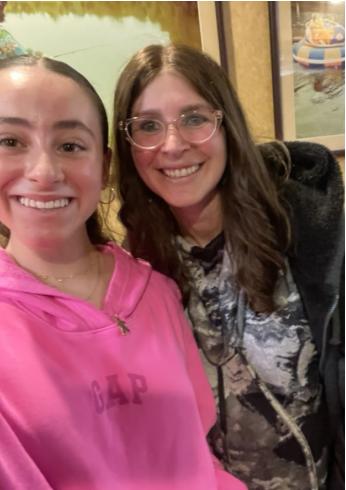
fluencers post October 7th has drastically impacted Judaism. Though their content is very diverse, they still educate, inspire, and advocate about Jewish values and do so despite the hate they get for simply being Jewish. Influencers have taken advantage of the platforms they were given, and use them to spread knowledge, combat antisemitism, and create a positive atmosphere for Jewish pride. Their dedication has not only strengthened the Jewish community but has also ensured that Jewish voices are heard and allows them to continue to inspire people on a daily basis.
By Sara Shimanovich (’27)
icture Thanksgiving and you probably imagine a big family meal, complete with a giant turkey in the middle of a lavishly set table. Children throughout America are taught that Thanksgiving is a time of being thankful, learning how the Pilgrims landed in America and joined the Native Americans in a peaceful feast. While Thanksgiving is viewed as a celebration to mark a positive time in American history and the beginning of peace with the Native Americans, the truth behind the holiday is rather dark. Unlike the stories told, Thanksgiving was a time of tension between the Pilgrims and Native American tribes and consisted of many, many battles.
The Pilgrims weren’t on a trip to explore new land, contrary to what we’ve been told. The Pilgrims were actually called Separatists, as they had separated themselves from the Christian Church, and went to America fleeing religious persecution. When they first arrived in America, their intended destination was actually Virginia. Due to navigational errors they ended up in Plymouth, Massachusetts, home of many Native American tribes. This unplanned destination caused them to be dependent on the Native American tribes that lived there. The Wanpanoag tribe, one of the Native American tribes, provided resources and hospitality to the Pilgrims.
However, the relationship between the Wampanoag and the Pilgrims was not as loving and caring as American stories made it seem. While the Wampanoag provided assistance to the settlers, it was because of their own selfish reasons. The leader of the tribe, Chief Massasoit, supported the Pilgrims in order to create an alliance with them against rival tribes. Additionally, not only did the Pilgrims barge into the Native Americans land, but they also brought with them diseases. This was due to the fact they didn't understand germs and cleanliness. As stated by James Lowen in Lies My Teacher Told Me, “Residents of northern Europe and England rarely bathed, believing it unhealthy, and rarely removed all of their clothing at one time, believing it immodest.” The Pilgrims not only spread disease but also took advantage of the Wanpanoag’s supply and kindness. As more settlers began to move in, they provoked conflict and wars between the Native Americans and the Pilgrims. Wars such as the Pequot War and King Philip's War led to a large decrease in the Native Americans’ population in the 17th century. This decrease in population, along with the diseases brought by the Pilgrims, took a heavy toll on the Native
Americans, resulting in many hardships for them, not the warm welcome described in most Thanksgiving stories. There are also many major misunderstandings about what truly occurred at the famous Thanksgiving meal of 1621. While it’s often assumed that the Wampanoag tribe was invited, they actually never received a real invitation. Rather they showed up as uninvited guests out of reverence and respect, signifying how the meal represented a power inequality between the two groups. The meal was also rather long, lasting for three days, and wasn’t just a dinner but included other activities such as hunting and games.
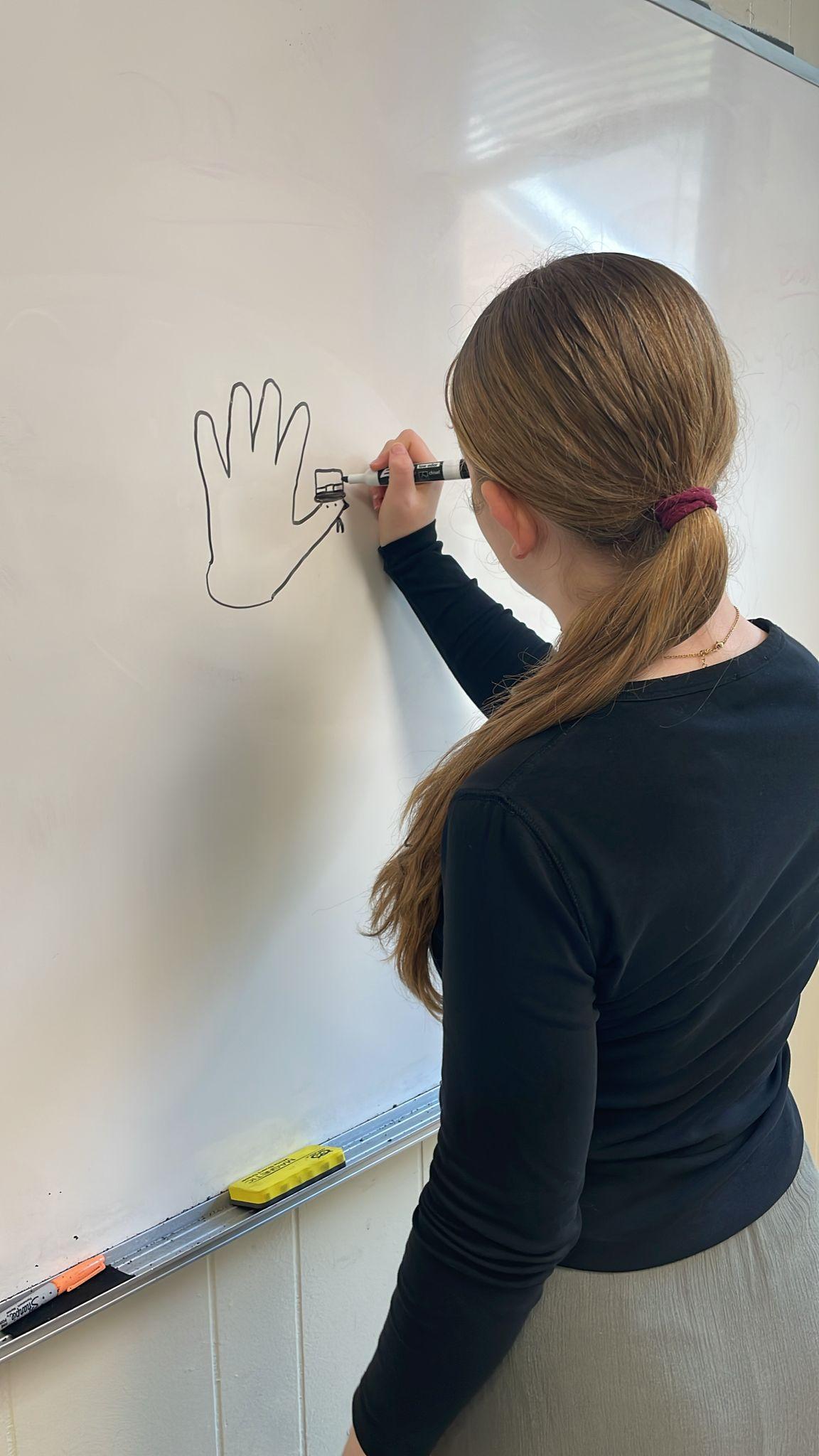
Another major myth about the meal was the menu served. It was not the basic American turkey, mashed potatoes and pumpkin pie, rather it was full of seafood, geese, duck, and even deer brought by the Wampanoag. The many wars that broke out between the two groups in the 17th century, after this meal also show that it definitely was not a celebration of lasting peace.
In 1789, George Washington issued the first American proclamation of thanksgiving to recognize the positive ending of the Revolutionary War and express gratitude. It became celebrated the way historical cultures including Greeks, Romans, and Jews often expressed thanks, with feasts and enjoyment, and the tradition stuck. By 1817, many colonies had adapted a holiday of thanksgiving, but not a universal day for the whole country. In 1827, noted author Sarah Joseph Hale became known as “The Mother of Thanksgiving” for advocating for a formal holiday to express gratitude. It too until 1863 when Abraham Lincoln proclaimed a holiday to take place on the last Thursday of November called Thanksgiving. Thanksgiving is a lot more complex and dark than the storybooks tell, and by recognizing the historical realities of the Pilgrims arrival, the Thanksgiving meal, their relationship with the Wampanoag, and the hardships the Native Americans had to go through, it can help Americans rethink what Thanksgiving is truly about. There are many myths that revolve around the American version of Thanksgiving. Thanksgiving today in America represents a time of gratitude and peace however, this day represents a time of suffering for Native American communities. It’s important these myths be recognized as it's important for all Americans to know the true events that occurred on Thanksgiving as it was a hard time for the Native American people.



In the lead-up to the elections, the GMSGers held a vote on a few school-related topics, giving everyone a chance to weigh in on some everyday choices and preferences. It was a fun way to practice the election process and show how group decisions come together, helping everyone feel involved before the upcoming elections!
1. Which do you like better: the tables or the couch in the lounge?
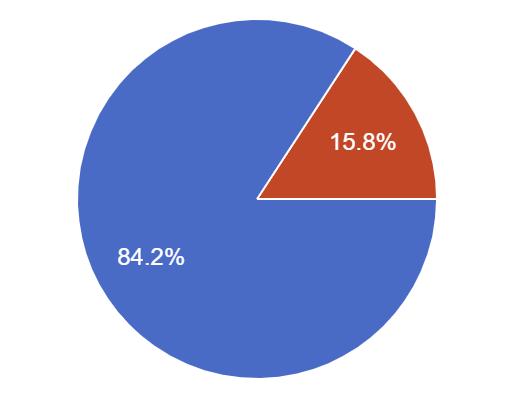

2. What's your favorite thing to do during the breaks in between classes?

Online Shopping Play Minecraft
Make a Bagel Talk to Mrs. Plotitsa

3. What's the best food combo in school?
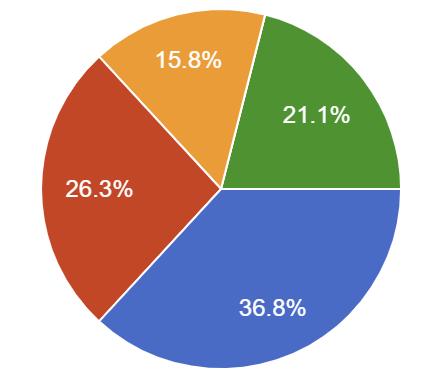

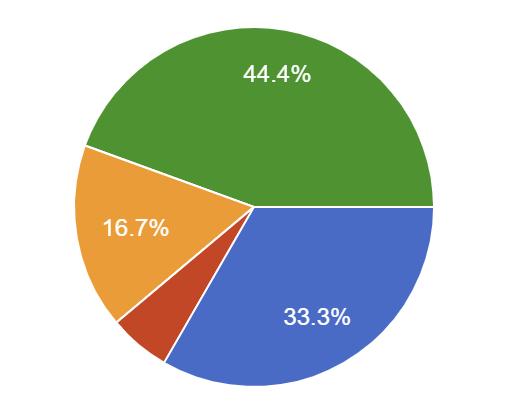
4. Would you rather be in the same classroom for most of your classes or move around every class?

Bagel and Cream Cheese
Apples and Peanut Butter
Oatmeal and Peanut Butter
Bagel and Butter


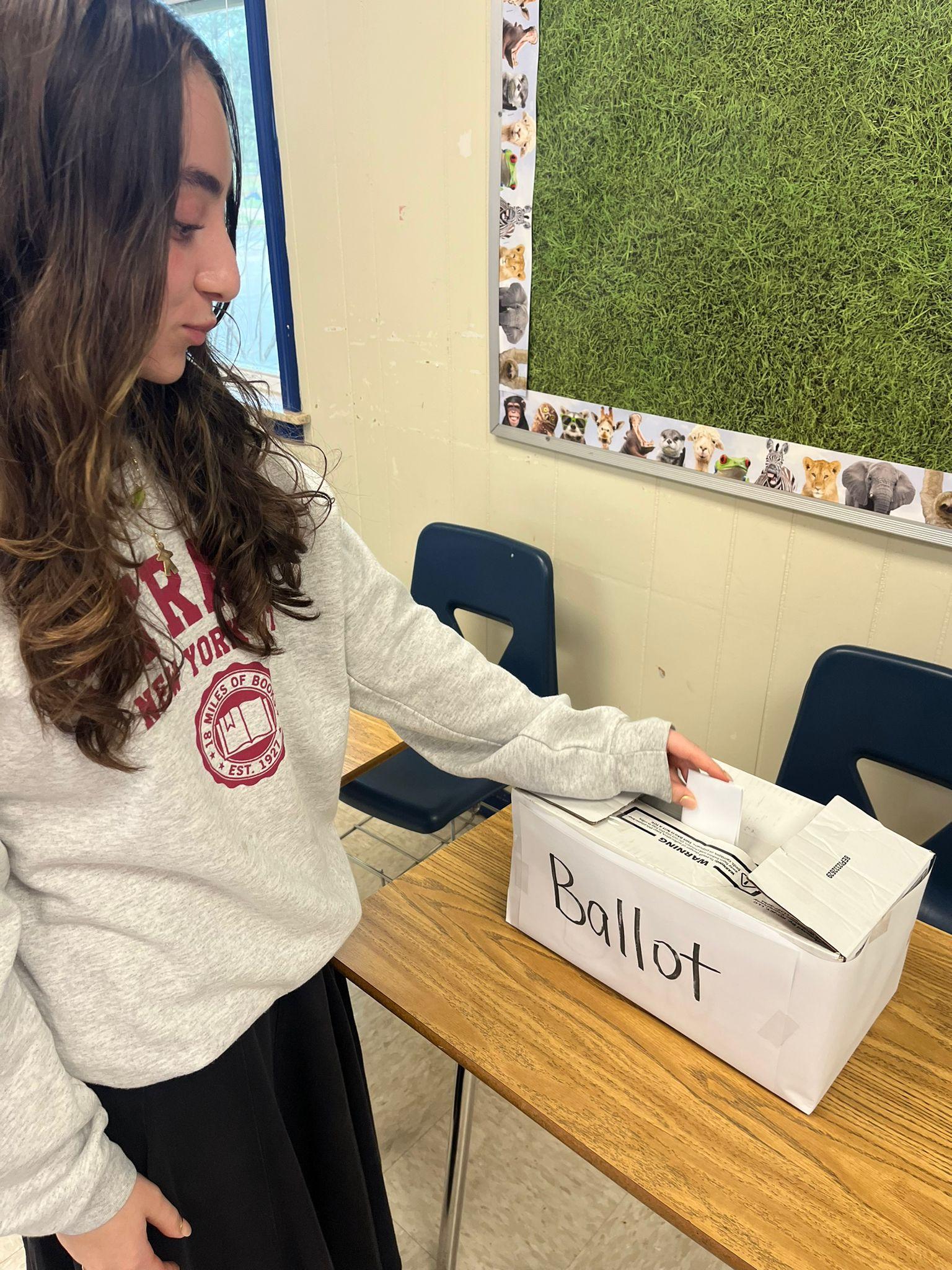
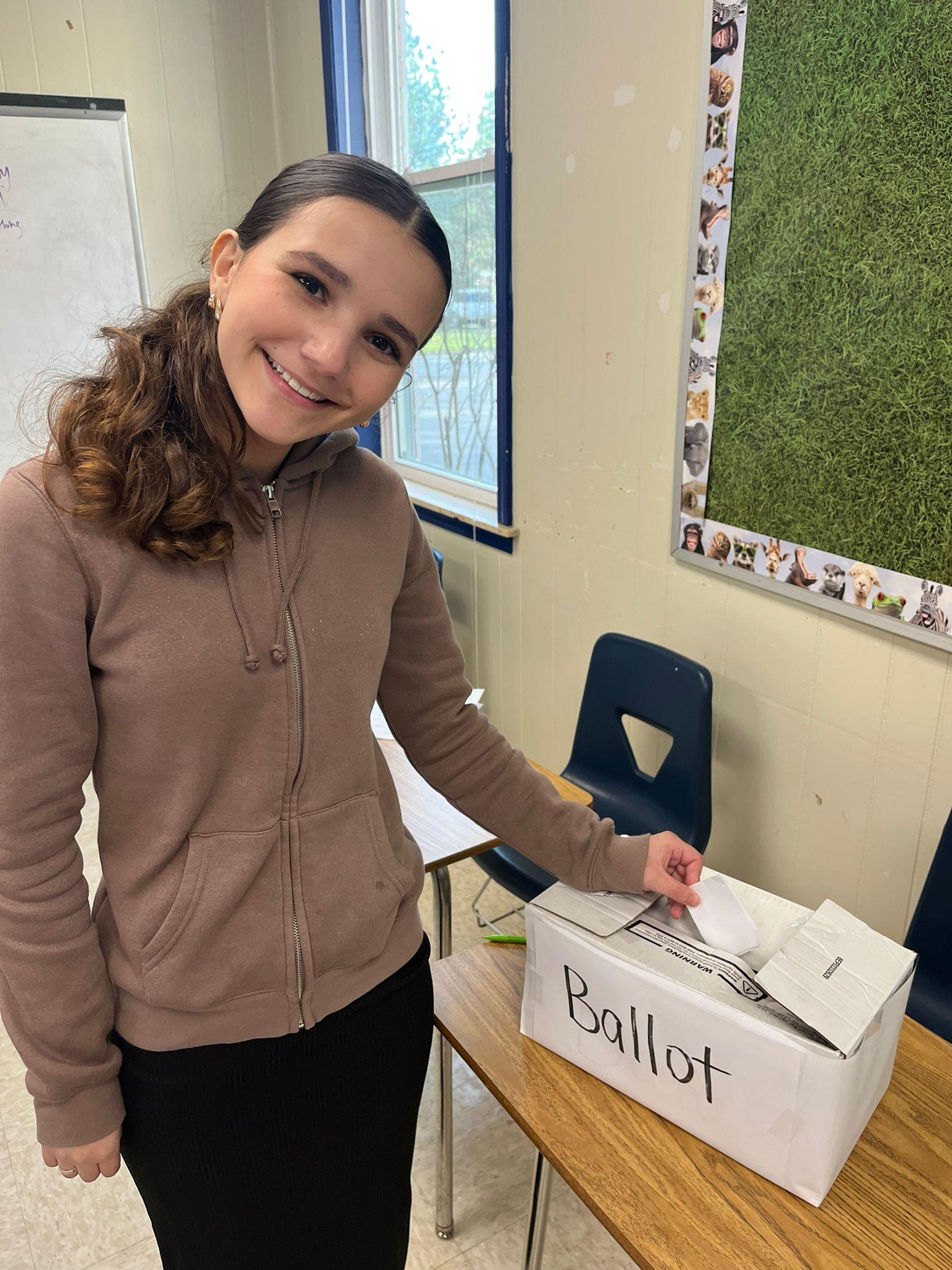
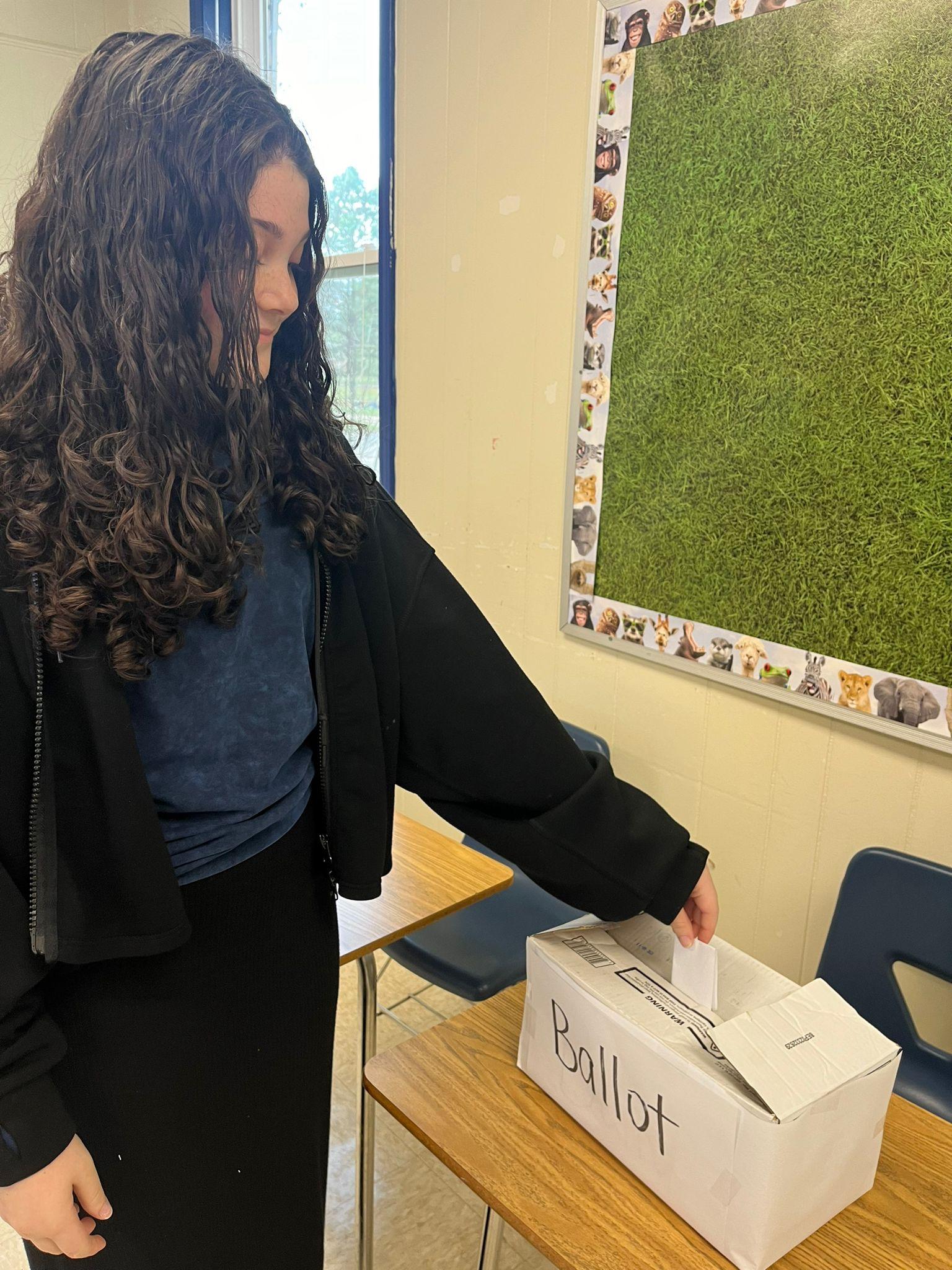



By: Debi Cohen ('27)
Pumpkin spice is not as good as people think. Did you know that despite its name, pumpkin spice is actually a blend of spices rather than pumpkin flavor, meaning that the term pumpkin spice is misleading? Pumpkin spice is really just spices that people associate with fall, like cinnamon, nutmeg, and other seasonings. And on top of that, all of these other spices combined to make pumpkin spice make it too sweet, which makes it disgusting to eat or drink. The only reason people like pumpkin spice is because it makes them get in the fall spirit. However, there are so many other flavors that are better and can do the same thing like apple cider or maple syrup.
Pumpkin spice is also extremely overrated because of the amount of advertising for it. People see videos and pictures, so they think it tastes good but in reality, all the hype is to compensate for the bad taste. All the publicity and the flavor itself has become a cliché and it has pushed out the other fall flavors that people still like, including gingerbread, caramel apple, or even spiced cranberry. Also, the promotions don't even make sense because it's pitched as a fall flavor but coffee companies like Starbucks and Dunkin release it in late August which is still considered summer. So, by the time fall actually comes around people are already bored of the taste and want something else, but because so many people focus on pumpkin spice, they don’t think about the other options they have. It's time people move on from pumpkin spice and expand on other seasonings.



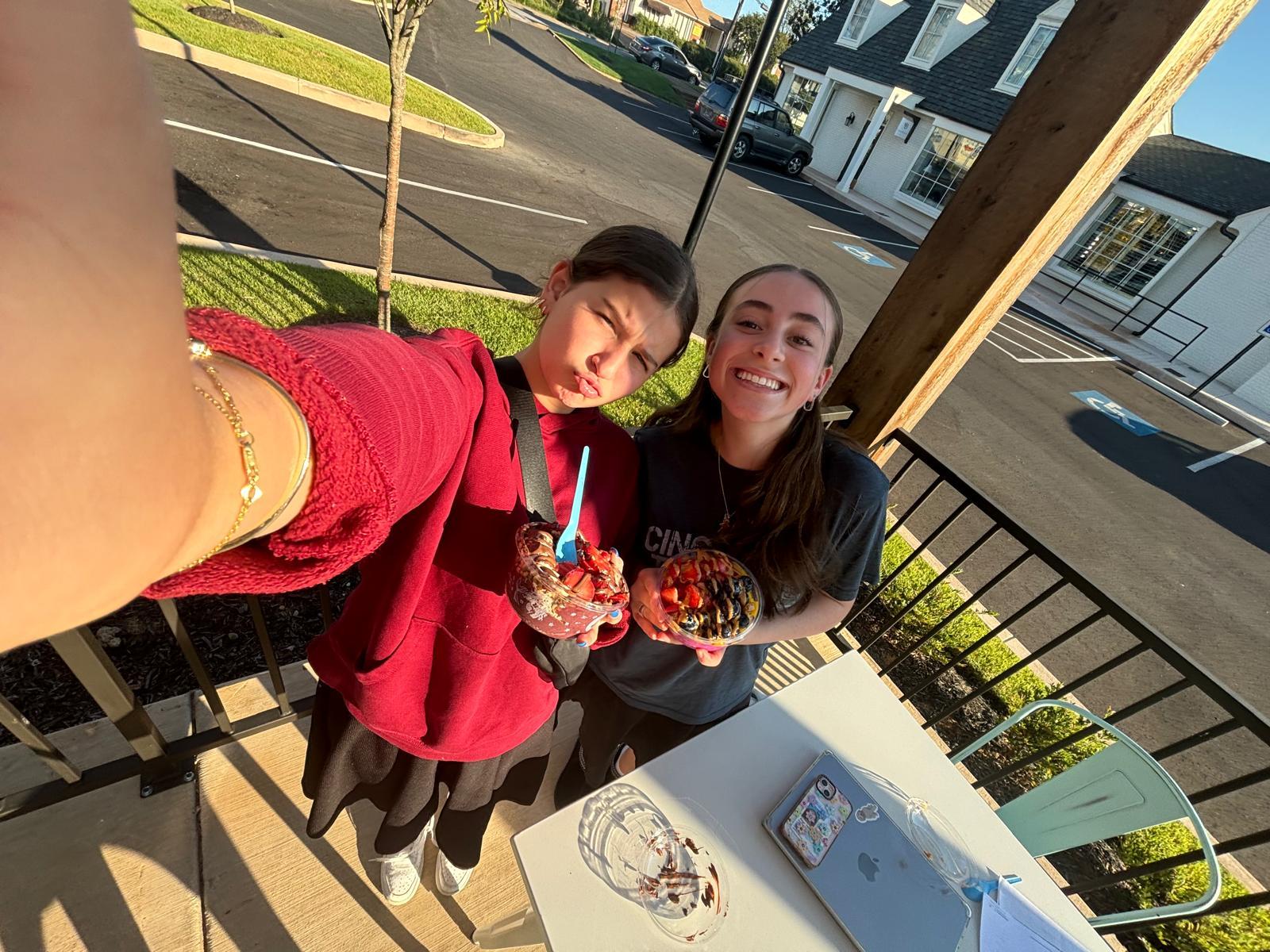
Playa Bowls has become a staple in my week since many of the items on the menu were identified as kosher, thanks to our local Chabad shluchim. Especially on hotter days, I have enjoyed going to get a smoothie or an acai bowl to cool me down and fill me up. Margalit Goldkin ‘26 said,“The environment at Playa Bowls is nice and the workers are very friendly.” Her repeated and favorite order is half acai, half mango bowl, with mango and granola on top. It is always hard for me to choose what to order, but luckily I can come back often because of its convenient location, about a 5 minute drive from school! The service is very fast and if you aren't sure which base to choose, they will give you samples of your choice. They have seating both indoors and outdoors, or you can easily order it to go. I highly recommend using the app as you can gain points and use them as discounts on future purchases. It is also exciting to see who I will run into, because whenever I'm at Playa, so is at least one other person from the community.
Often, when people come to visit Memphis, they already know about the kosher bakery here, since Ricki’s is famous all over the world. People all over the country order her challahs and baked goods for delivery. Adina Schwartzberg ‘28 said, “It’s a really nice place to walk into because everyone there greets you nicely, and I love both the cinnamon challah and the chipsticks. Those are probably my favorite and it's great to know that we have a kosher option with delicious baked goods.” We are incredibly lucky that Mrs. Ricki Krupp has the most delicious baked goods and the best staff. When it comes to yummy cakes, cookies, or delicious Challah, they've got you covered! If you aren’t sure what cookie to buy, there are often samples available, to help in your difficult decision! We are also privileged to have Pizza Tuesdays, where Ricki provides freshly made pizza exactly when you want them.
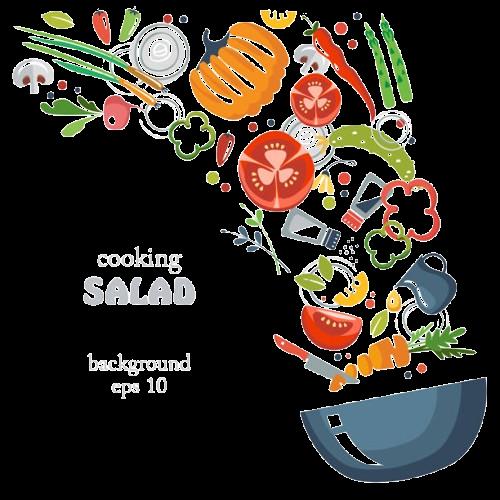
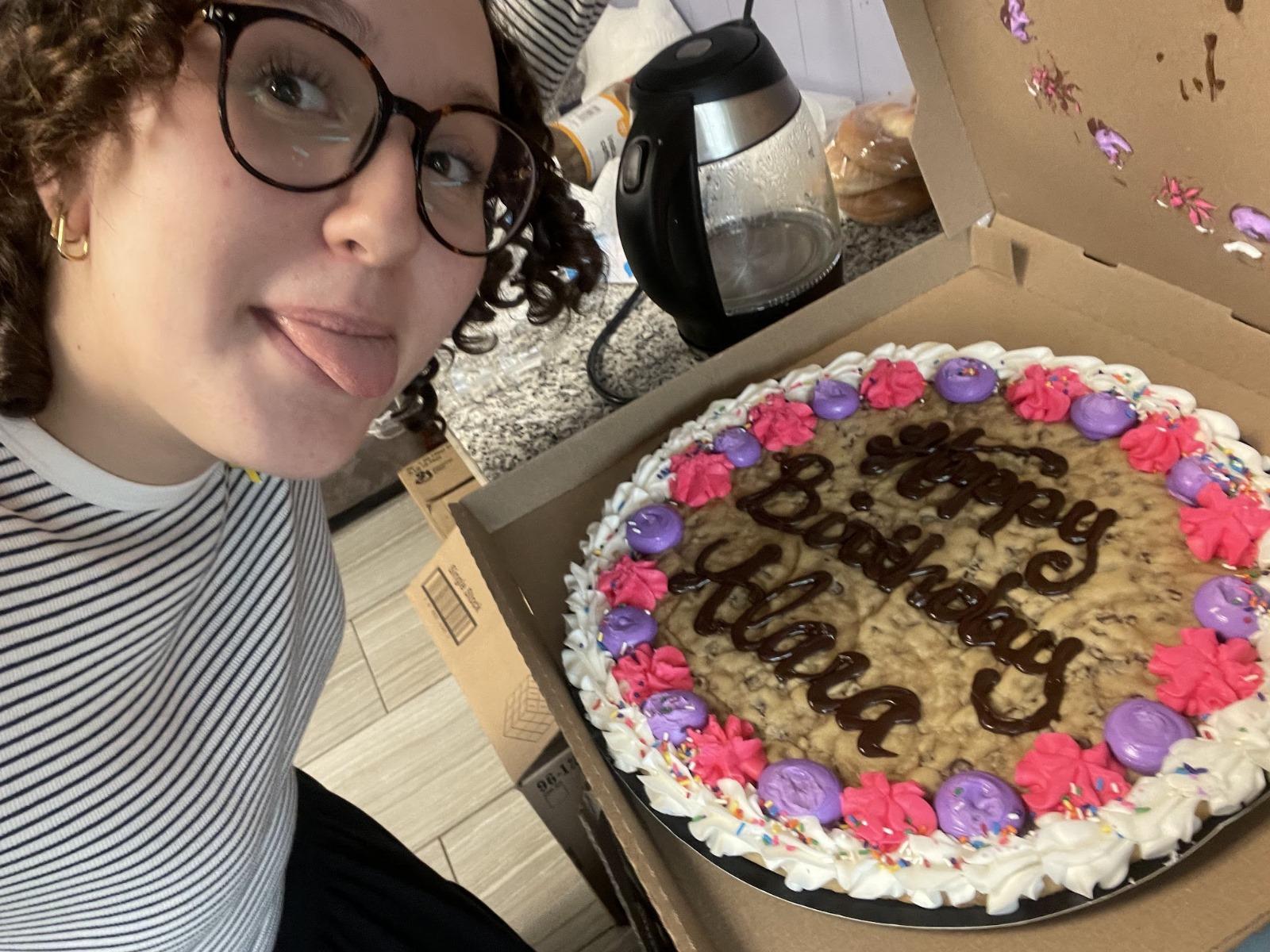
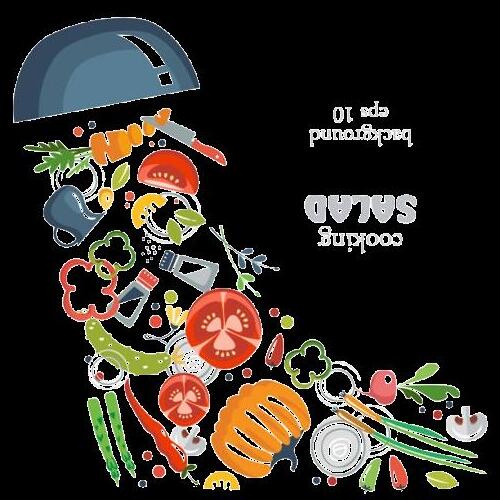
Nosh - A - Rye Deli, located in the Jewish home, has a wide variety of hot foods. Hodaya Harary ‘27 said, “I like going to the Jewish home to eat because it’s a great place with simple meals! I enjoy getting the smoked turkey wrap, plus their salad bar is filled with great choices!” Nosh - A - Rye Deli also offers takeout and many in the community have ordered weekly for shabbos. Popular items for the weekly order consist of a pan of chicken tenders, grilled chicken, pulled beef brisket, and much more. Many people don’t order because they are not able to pick up but fear not, some of our CYHSBers pick up the orders and deliver them to homes each Friday, charging $10 per delivery. If you choose to go there, you can dine in or sit outside. Outside there is always calming music playing and nice shading umbrellas. Your presence at the Jewish home may also brighten the days of the elders who live there.
We are so excited for Sam's Corner's new MEAT menu and can’t wait to try it!
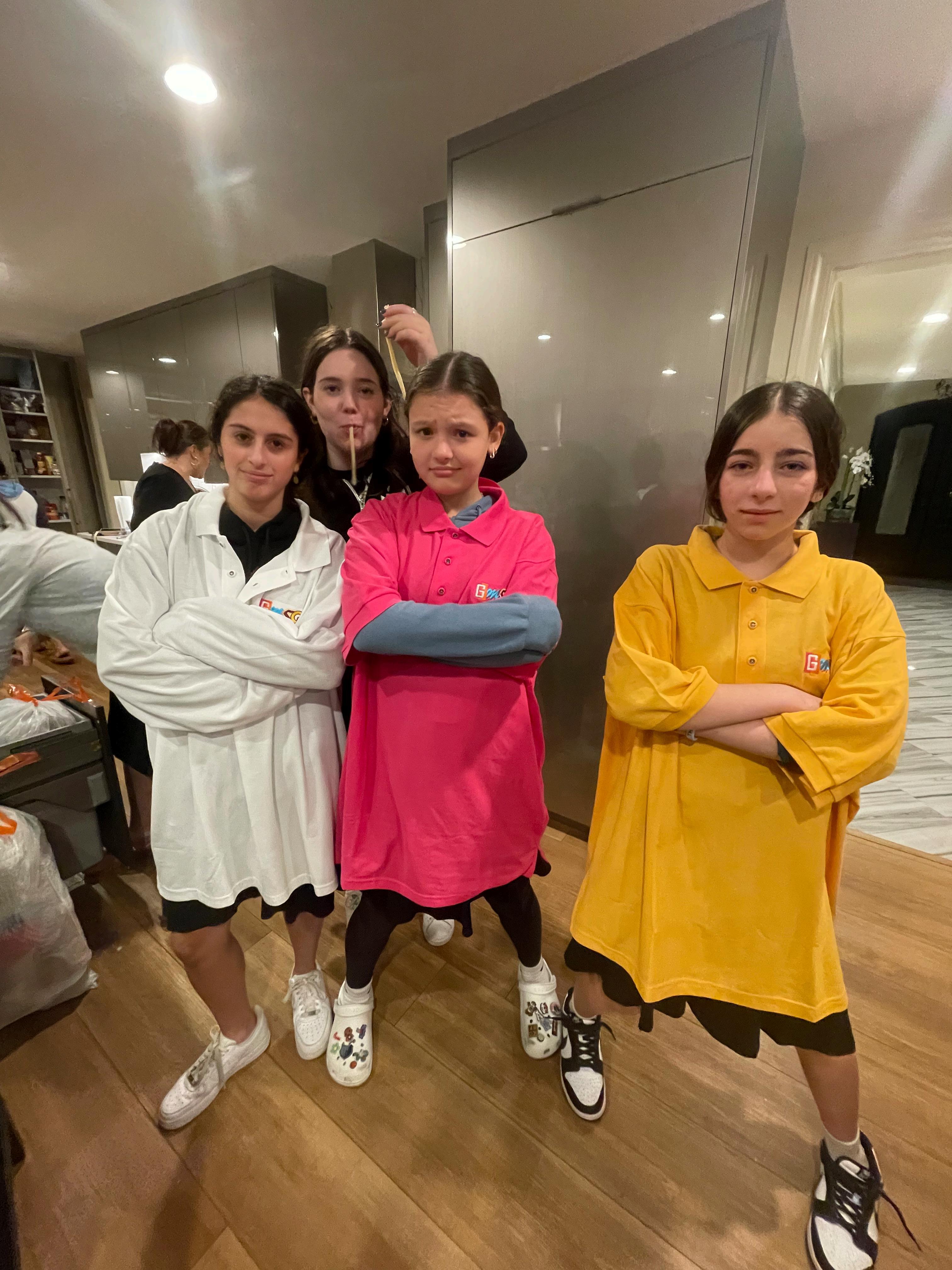
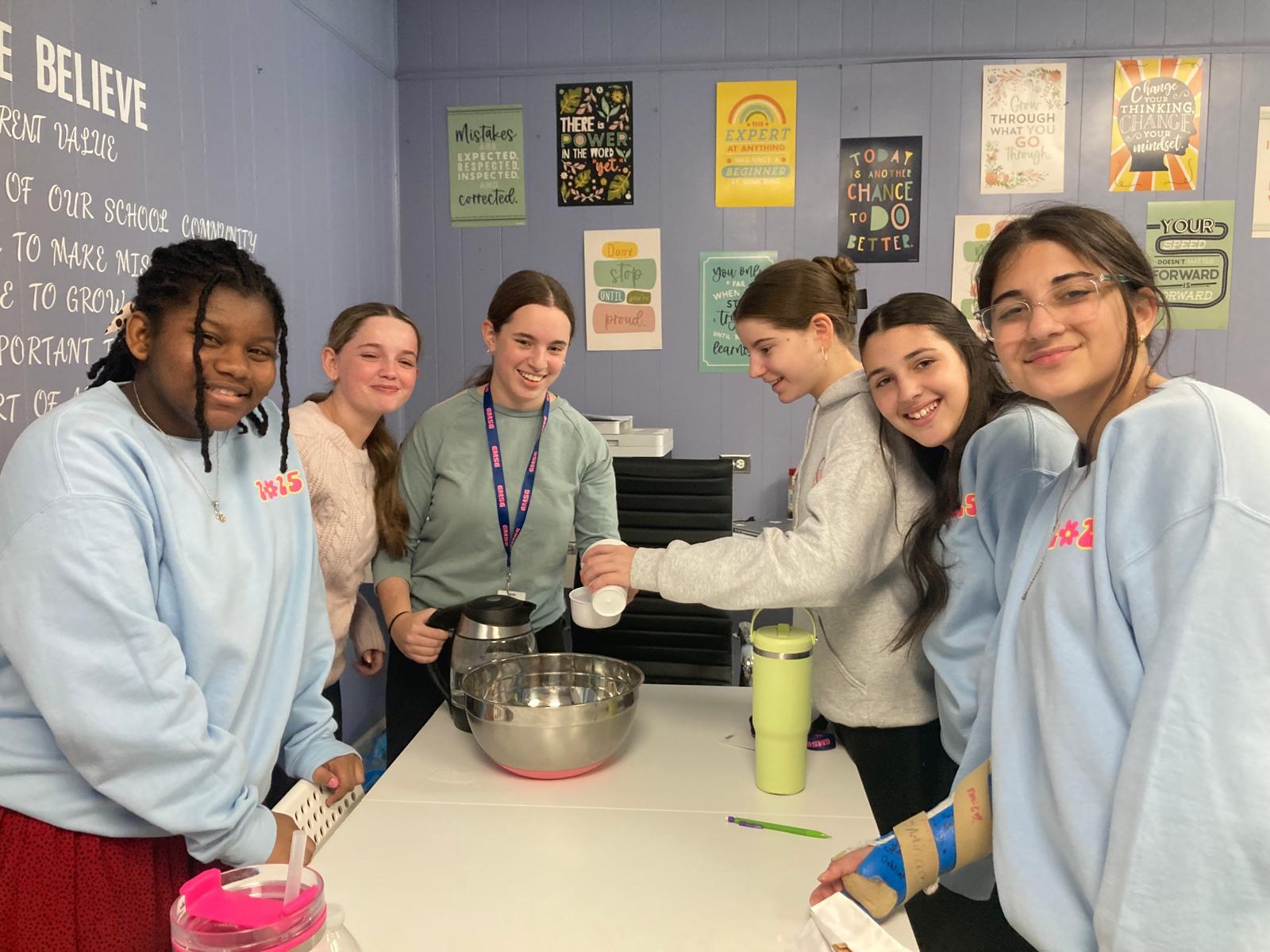
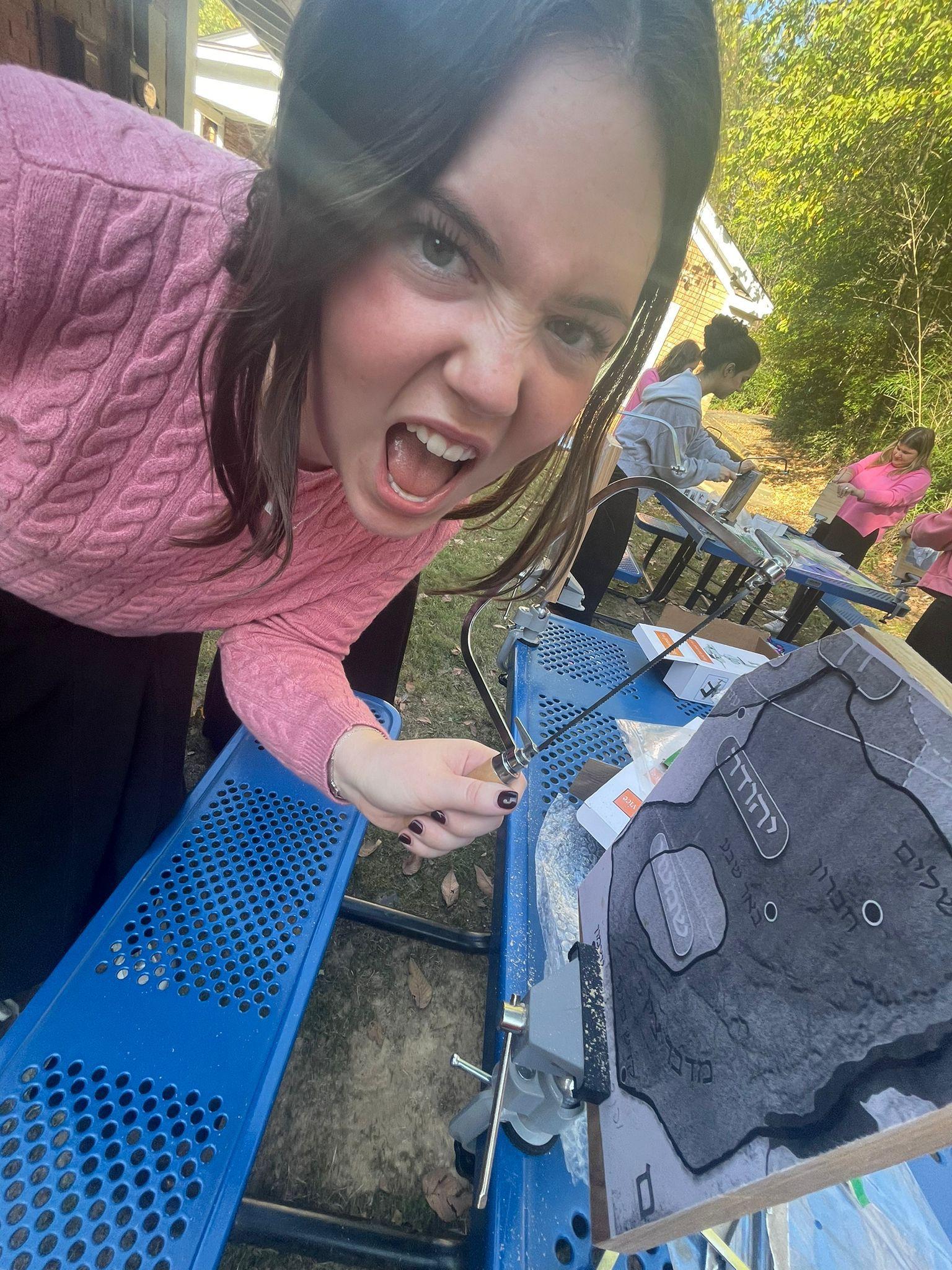
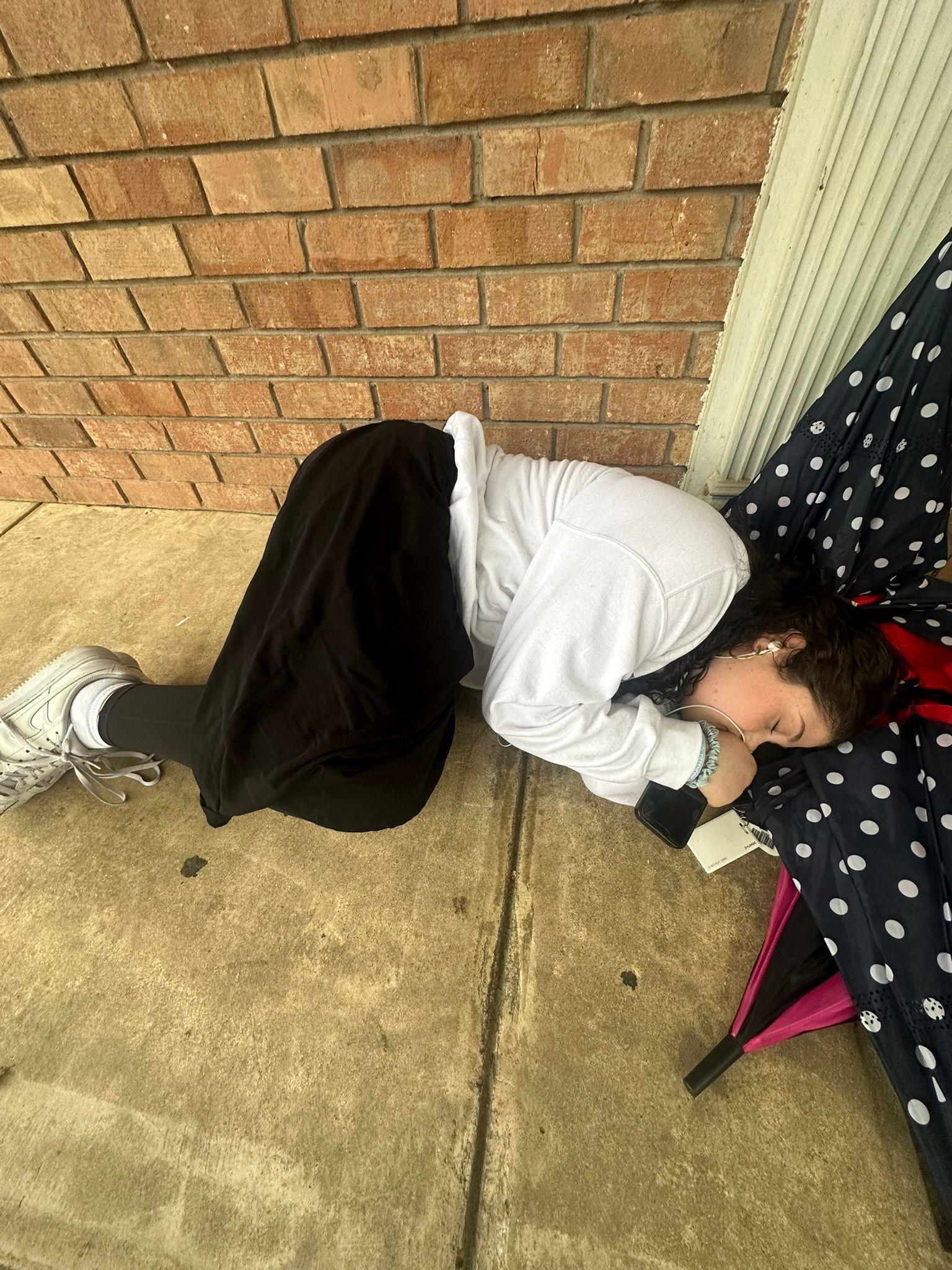
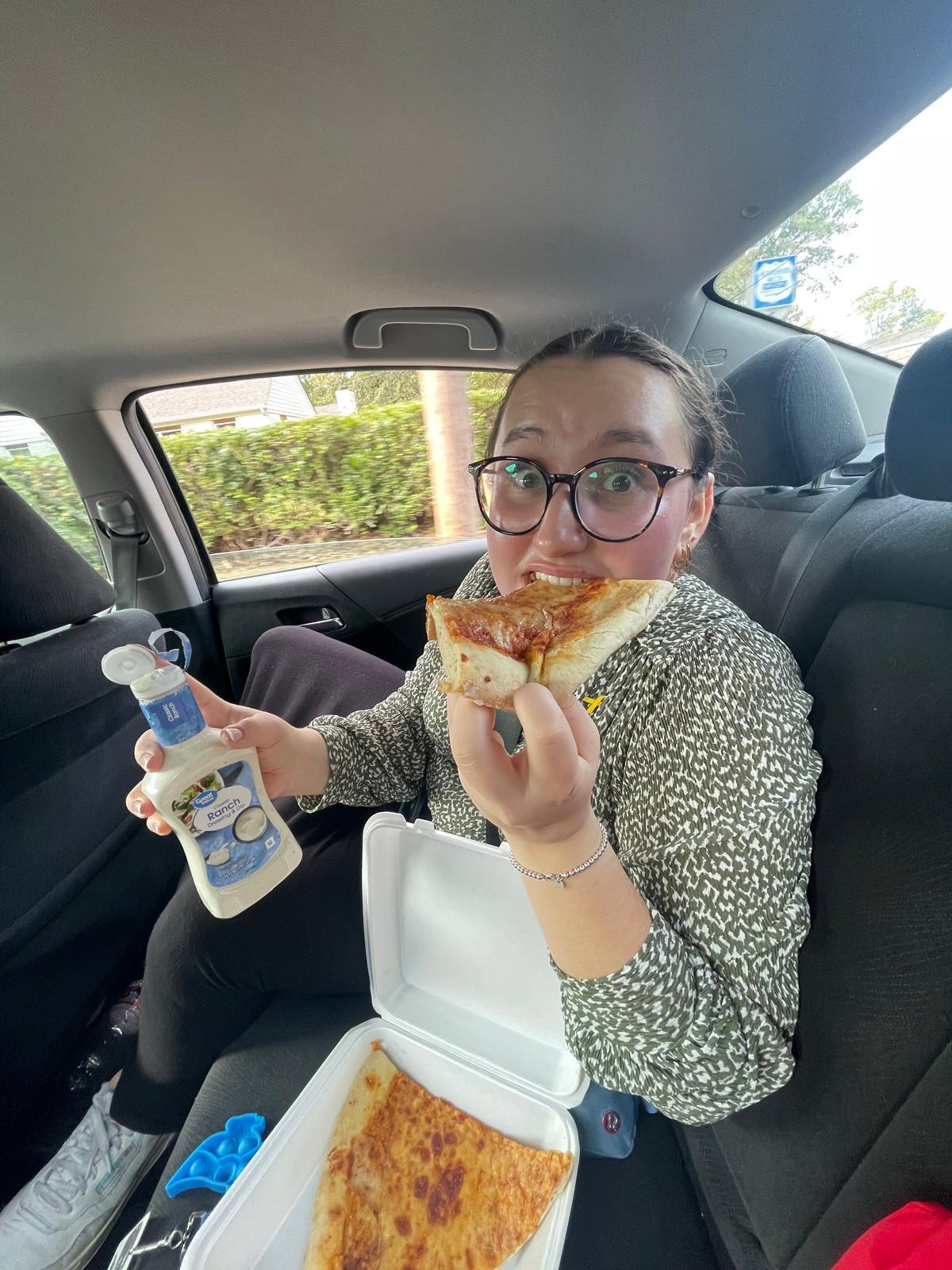
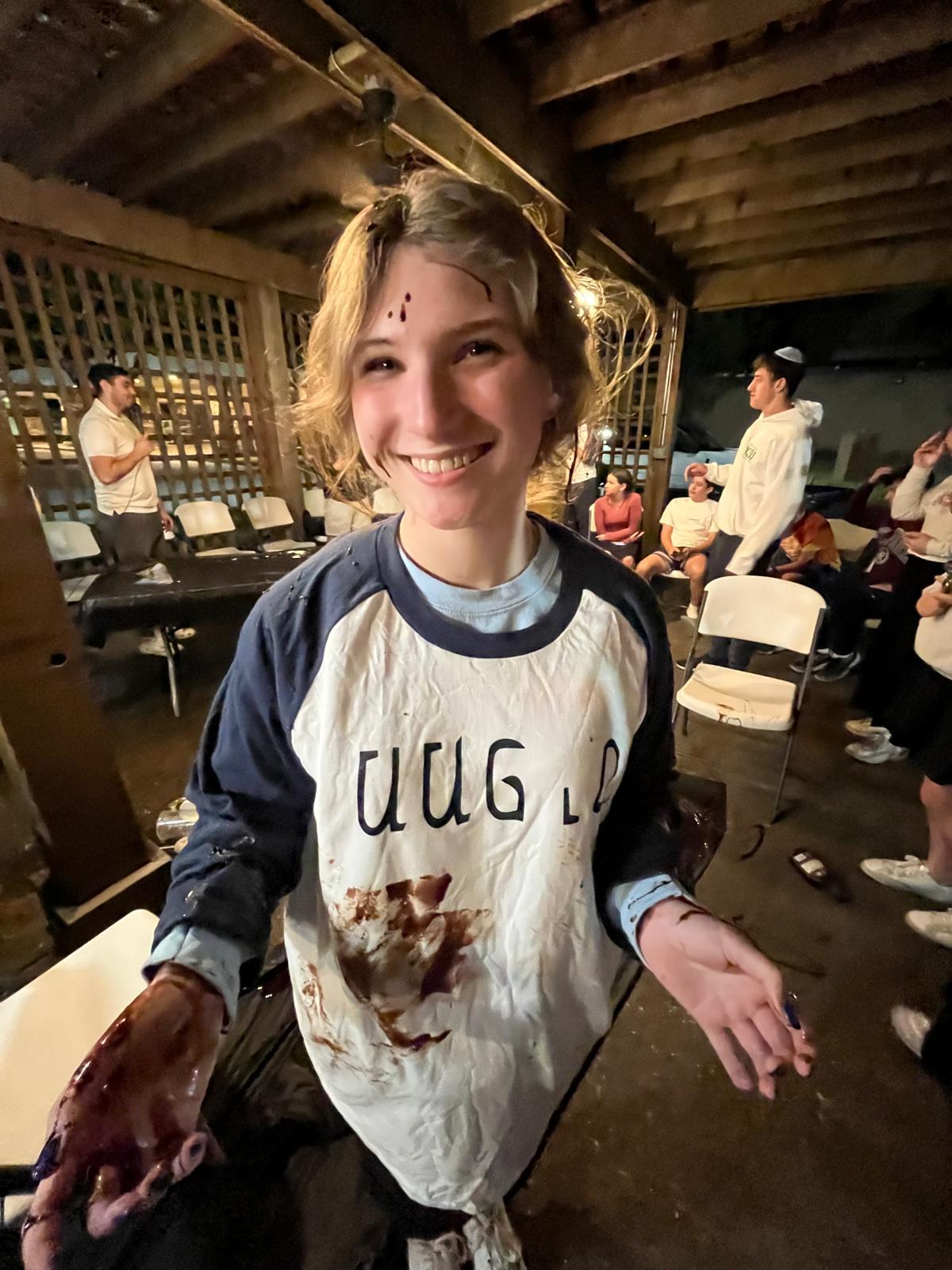
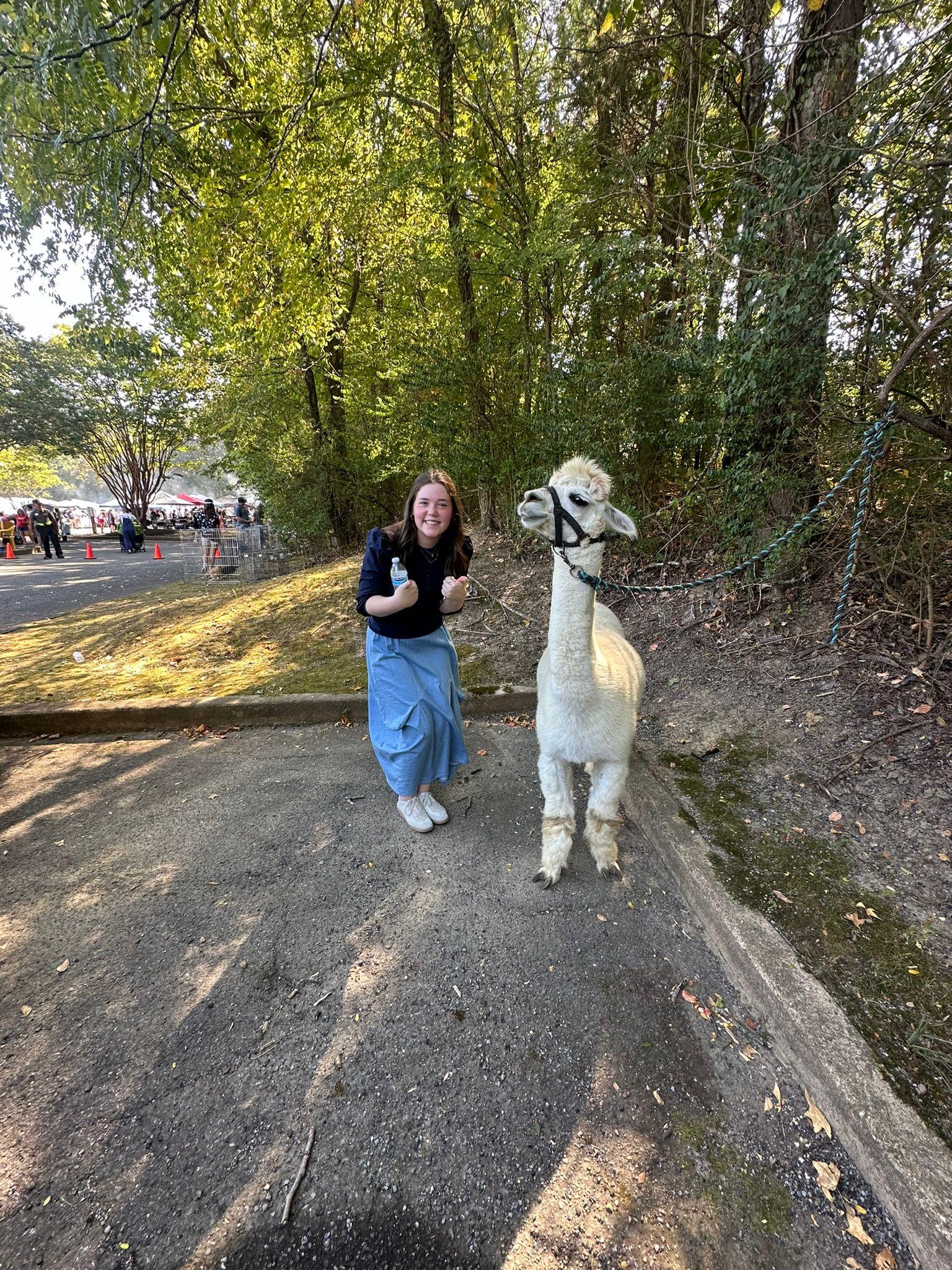
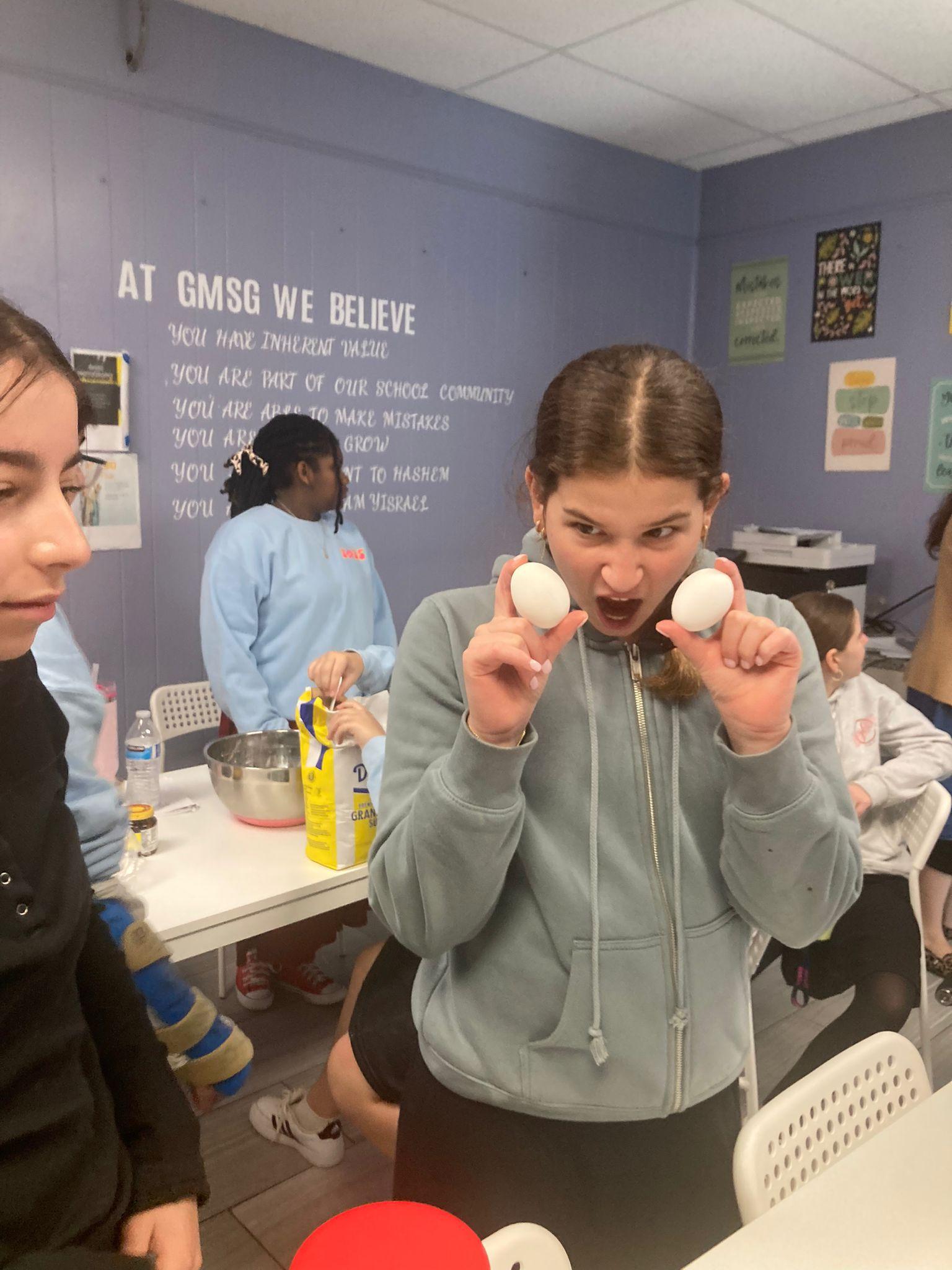
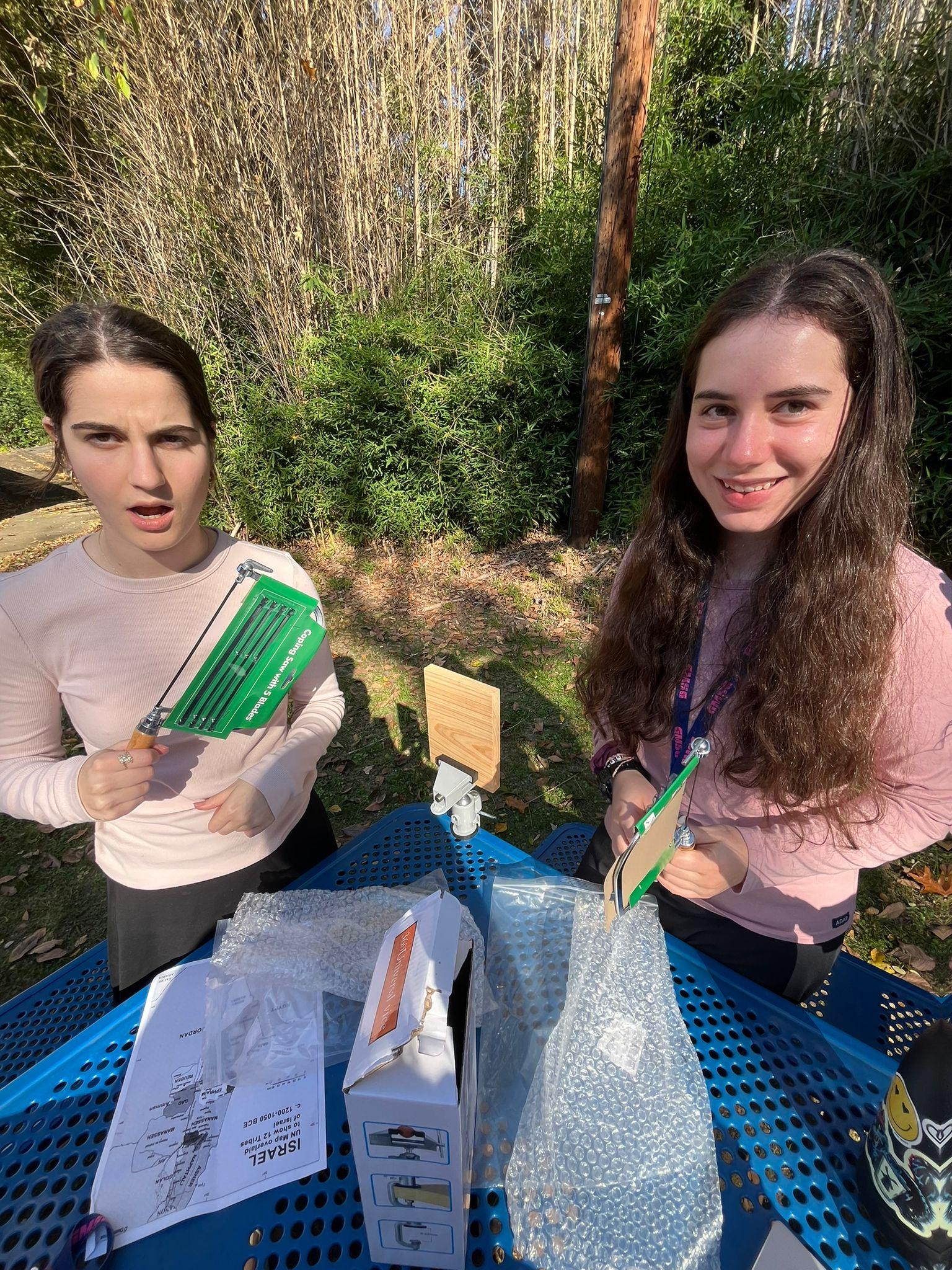
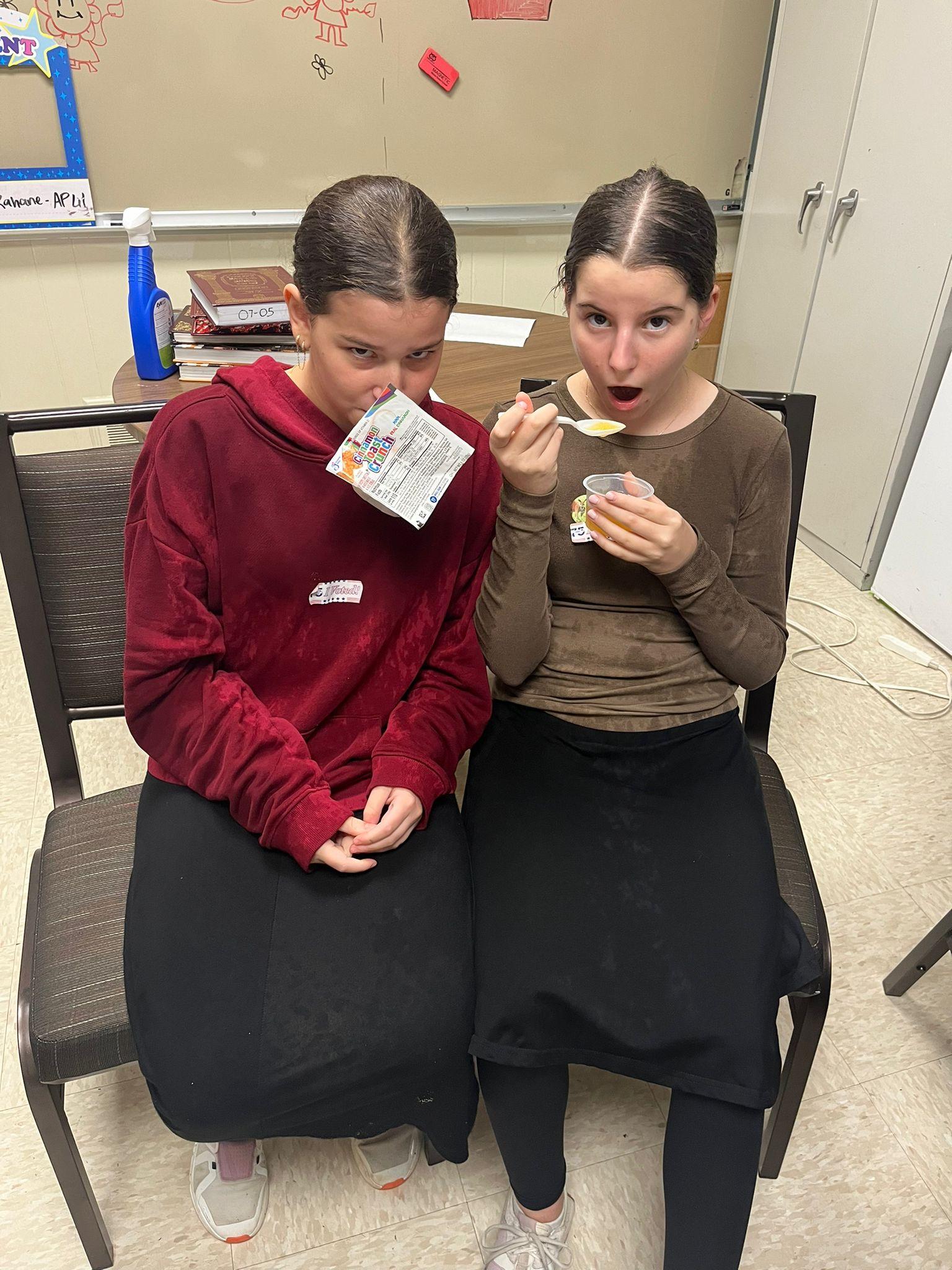
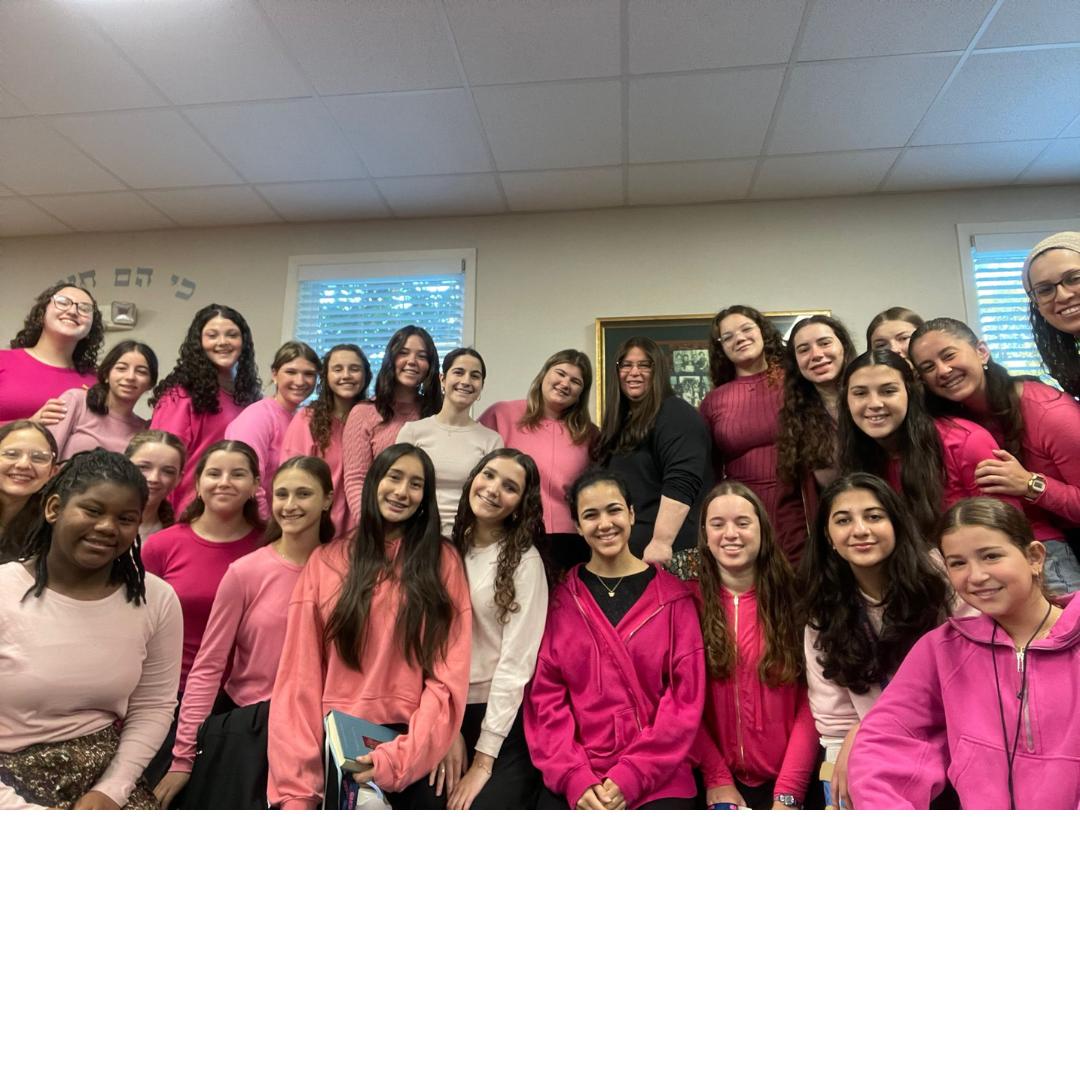
nd all the differences, we bet you won't! If you think you've found them all, send them in to
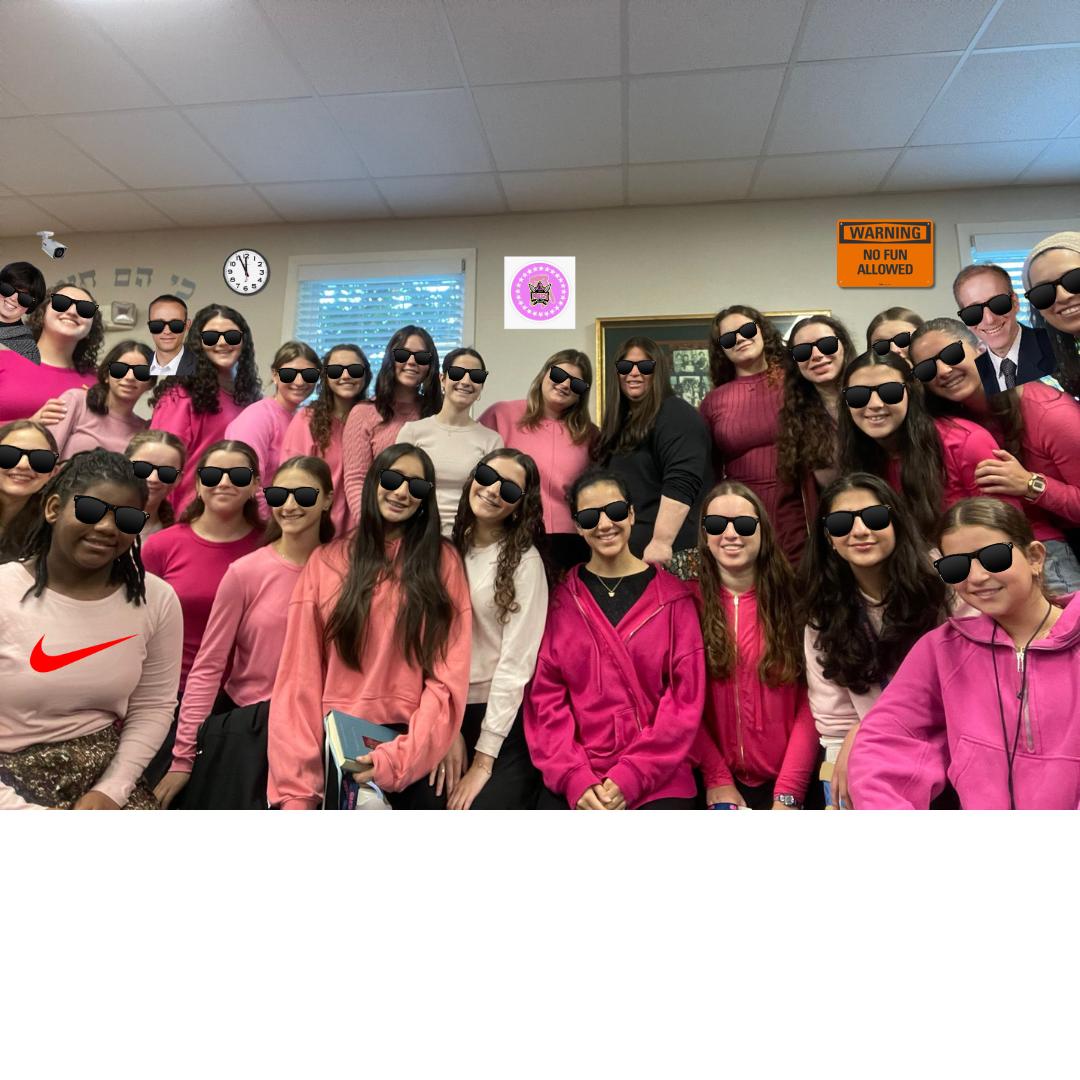
Dear Goldie,


I am in desperate need of your help! This morning I was in such a rush that I had NO TIME to pack a lunch. The entire morning was such a blur. First, my siblings were going crazy. Gittel needed her socks, Avrumi couldn’t find his blanket, and to top it all off Chava had a whole breakdown when I said we couldn't go to Dunkin’ before school. Then I didn’t even have time to get ready. Now all I have to eat is the random food I find in the lounge, and sometimes I can’t even find something I want to eat. You know what they say: lunch is the most important meal of the day. So please, Goldie, help me find something to eat!
Sincerely,
Lacking.a.lunch24
Dear Lacking.a.lunch24,
Ha! I’ve been there before. Trust me, I have had my fair share of lounge food over the years, so you've come to the right place. Let me give you a few options to choose from. First off, we have the most delicious slushy you'll ever taste in your life. Though it might seem a little weird, nearly-frozen apple juice can really hit the spot—jam packed with vitamins, it's sure to keep you feeling good all day long. Next, a perfectly burnt, chewy, or even frozen bagel of your dreams is sitting right in the freezer. Pair it with the most amazing, antique cream cheese and it's sure to be a great lunch option. Then this delicious and nutritious pairing, oatmeal and peanut butter act as a perfect creamy blend of ingredients, served in your favorite styrofoam cup; it's perfect for a chilly day! An oldie but a Goldie (see what I did there??), extra crunchy cereal that is perfect for your crispy cravings, and with a large range of cereals, I'm sure you'll find the best one for your meal. Last but not least, someone’s old Dunkin’ iced coffee, but I wouldn't recommend drinking it if it looks as old as I do! I hope these options were helpful and managed to sustain you for today, but next time I would try and make lunch at home no matter how rushed you are.

Dear Readers,
After an action packed Tishrei, Cheshvan often brings a somber mood with its quiet and lack of Jewish holidays. Instead, I hope we have shown you how to use this time to be inspired by stories from Tanach and our Parshios and to inspire others like the many Jewish influencers, after voting of course. Don't forget to pick up some of Memphis' best Kosher foods while doing so, but maybe not a pumpkin spice latte. Wishing everyone a restful month and a good Shabbos.

To sponsor an issue for just $30, email Margalit Goldkin at margalit.goldkin@mhafyos.org
Shayna Klein
Editor-in-Chief
shayna.klein@mhafyos.org
Sarah Kahane
Senior Editor sarah.kahane@mhafyos.org
Dahlia Siegel
Managing Editor dahlia.siegel@mhafyos.org
Hodaya Harary
News Editor
hodaya.harary@mhafyos.org
Neima Rovner

Assistant Editor-in-Chief
neima.rovner@mhafyos.org
Brooke Sanderson
Layout Editor brooke.sanderson@mhafyos.org
Atara Segal
Features Editor
atara.segal@mhafyos.org
Aliza Wiener
Social Media Editor
General Staff
Talya Mendelson
Margalit Goldkin
Sara Shimanovich
Yonina Lichter
Rachel Sanderson
Debi Cohen
Adina Schwartzberg
Yaheli Zalman
Daphna Kam
Sara Klein
Mrs. Ashley Brown &
Mrs. Ashley Brown & Rabbi Baruch Harris
Faculty Editors
aliza.wiener@mhafyos.org
Instagram: @goldie_globe
Mrs. Dina Selter